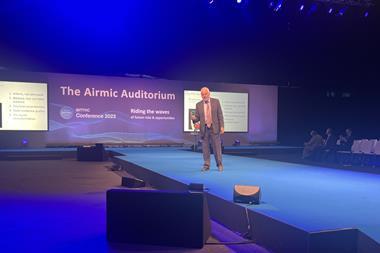Faced with limited insurance cover and soaring premiums, the UK food sector has produced industry guidelines on the management of fire risks. Publication of the Fire Risk Minimisation Guidance in February is a tangible demonstration of the food sector's desire to resolve the crisis in obtaining suitable fire insurance cover at realistic premium rates. It is hoped that this positive move will lead to insurers reducing premiums for food sector organisations adopting the best practice guidelines. Many food companies have seen their insurance premiums double, if not quadruple, as insurers reacted to their increased concerns about fire risks in the industry.
Composite panels have become widely used in the food industry for their insulation properties and ease of use in construction, but they are highly combustible if penetrated by fire, explained Derek Mason, chairman of AIRMIC's food and distribution industry forum. Following the collapse of Independent Insurance, a major insurer in the food sector, and a history of high-profile fire losses the insurance industry has shied away from the risk.
"Food cover is viewed as a distressed account by many insurers. Loss ratios of 500% are often quoted, but we (the industry) can't see any evidence of that being accurate for the sector," says Derek Mason, who played a key role in the formulation of the new guidelines. "We do not believe it is nearly as bad as it has been painted and decided to create risk management guidelines for organisations to adhere to, and so attempt to rehabilitate the food industry with insurers.
"If we can obtain insurers' acceptance of the Fire Risk Minimisation Guide then we would seek to go down the accreditation route for organisations in the food sector. We believe that it is a very practical guide to the control of fire risks in the food industry."
Derek Mason, group risk manager at Uniq, and Tom Chambers, safety, health and environmental manager for Hazlewood Foods, undertook production of the Fire Risk Minimisation Guide for the Food Industry Panels Group with the assistance of its members, Royal & Sun Alliance Global Consulting and Aon. A meeting is now planned with the Fire Prevention Association, which has expressed its interest in the guidelines.
AIRMIC executive director, David Gamble, commenting on the publication of the Fire Risk Minimisation Guide said: "Such initiatives are possibly a way forward when insurance is difficult to come by. The demonstration of good risk management and adoption of best practice within an industry is something which underwriters should note in their considerations."
The 'speedy and resolute' action of the food sector was also recently praised in a Post Magazine editorial, which said that the insurance industry should welcome it with open arms.
The Fire Risk Minimisation Guide is available via www. airmic.com, or from the Chilled Food Association, Cold Storage and Distribution Federation, Ice Cream Federation, and the UK Association of Frozen Food Producers.



















